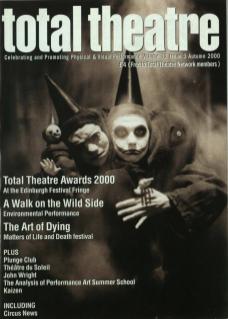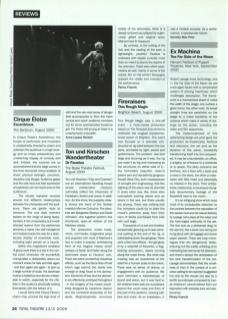Robert Lepage loves technology, and in The Far Side of the Moon we are once again faced with a complicated system of shining machinery which challenges description. The framework is a mechanised sheet of metal the width of the stage: one surface a giant mirror, the other matt. Its broad straight lines are paralleled on the stage by a linear backdrop of low screens which make a variety of settings for the action, including the video and film sequences.
The metamorphoses of this astonishing design are what give the production its theatricality. Artificial and obtrusive, the set acts as the dynamo of the piece, constantly transforming itself into the unexpected. It may be a launderette, an office, a surgery, an entrance to a wardrobe or to space. The story concerns two brothers, one a loser with a heart and a head in the stars, the other a materialist with little heart and absolutely no interest in the stars. Their antipathetic relationship is developed alongside documentary footage of the Soviet US race to the moon.
It is an intriguing show which owes most of its considerable attraction to the contrast between the naturalism of the spoken text and its casual delivery by Lepage (who plays all the roles) and the hard-edged artificiality of the set. The first acts as a deliberate drag on the second, like a sleek new racing car hung about with old luggage and brown paper parcels. There are long monologues that are dangerously sleep-inducing, but the subtle unfolding of an interesting tale demands full attention, and there's always the anticipation of the next transformation of the set. Lepage demonstrates that the smallness of man in the context of a universe waiting to be explored (suggested not only by the visuals but also by a terrific soundscape composed by Laurie Anderson) cannot detract from our fascination with everyday lives and relationships.

